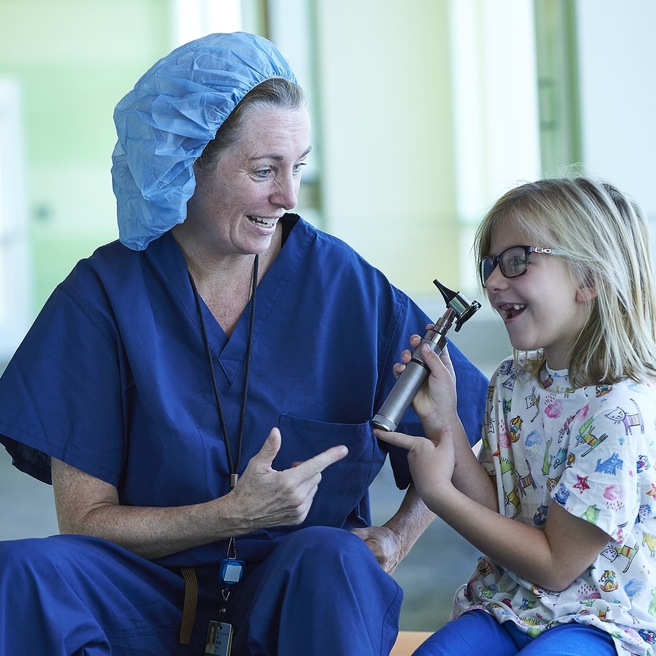Vestibular Migraine is the most common cause of vertigo and dizziness in children. Your child may present with dizziness, motion intolerance, vertigo, nausea or vomiting, sensitivity to lights or sounds, and loss of balance. These symptoms can occur with or without a headache or visual aura. The episodes can last between a few minutes to 72 hours and often recur.
Cause of vestibular migraines
Vestibular migraines are believed to be inherited, given that most children with vestibular migraine have a family history of migraines. We also know that stress, lack of sleep, dehydration, and certain foods can trigger vestibular migraines. The exact mechanism of what causes the vestibular symptoms is unknown, but it is believed the symptoms are related to a constriction of blood vessels around the brain.
Diagnosing vestibular migraines
Your primary care provider will likely refer your child to a pediatric otolaryngologist (ear, nose and throat or ENT specialist) because diagnosing the cause of vertigo can be challenging. Vestibular Migraines must be differentiated from other forms of dizziness, and a thorough evaluation of all possible causes may be necessary. An otolaryngologist is best able to perform the comprehensive evaluation and to know when to call on the expertise of other specialists.
The otolaryngology evaluation will include:
- Extensive medical history-taking with questions for both you and your child
- Thorough physical exam, especially of the head and ears
- Vestibular exam to evaluate their balance and inner ear function
During the course of the evaluation, you will meet with a vestibular trained audiologist for an evaluation and further testing. This evaluation may include:
- Audiologic evaluation (hearing test)
- Rotational chair testing, which involves your child sitting in a computerized rotating chair, safely secured with a seatbelt, and wearing light weight goggles. During this test, your child’s eye movements will be recorded as the chair gently moves.
- Videonystagmography (VNG), which involves your child wearing lightweight goggles that have tiny cameras to record eye movements. During the test, your child will be asked to look at a series of objects and their eye movements will be recorded. In another part of the test, warm and cool air or warm and cool water will be placed in your child’s ear canal and their eye movements will be recorded.
- Vestibular Evoked Myogenic Potential (VEMP), which involves gently placing electrode stickers on your child’s forehead, neck, and eyes. Small earphones will also be placed in their ear. The earphones will send clicking sounds to their ear and your child’s body response to the clicking sound will be measured in the electrode stickers.
- Video head impulse test (VHIT), in which your child will wear lightweight goggles that measure eye movements. During the test the audiologist will quickly turn your child’s head and their eye movements will be recorded.
During the course of the evaluation, you will meet with a vestibular trained physical therapist for an evaluation and they may perform tests such as:
- Evaluation of gross motor skills, such as hopping, skipping and jumping with eyes open and closed
- Dynamic Visual Acuity, which involves testing your child’s vision while your child is shaking their head
- Posturography, which involves your child will wearing a safety harness and standing on a moving platform to evaluate balance.
Referrals to other specialist may be considered, as well as:
- Lab (blood) tests
- Imaging tests, such as CT scan or MRI
Treatment of vestibular migraines
In children, the first step in treatment is preventing the migraines from recurring. This involves reducing triggers. You should ensure that your child is getting adequate sleep, exercise, nutrition, and hydration. Migraine related foods should be avoided, such as: caffeine, chocolate, aged cheeses, hot dogs, and foods containing MSG. If those modifications fail, migraine medications may be considered to prevent symptoms or stop the symptoms during a migraine episode.
Resources to help
Reviewed by Erin W. Field, MMS, PA-C
